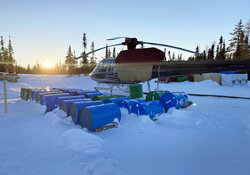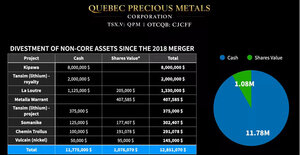Ian Gordon: I knew that the big bull markets in stocks always occur in the autumn of the cycle; and in 1999, I was confident that the autumn bull market that started in 1982 was coming to an end due to the massive ongoing speculation, particularly in the dot.com stocks. A new issue was coming to the market every day and once it did, the price rose two to three times on the first day of issue. That kind of speculation, and the fact that some things should never have even been allowed to come to the market, indicated to me that we were coming to the end of the big autumn bull market—sort of like the frenzied days in the summer of 1929.
When such big bull markets end—as it did in January 2000 for the Dow and March 2000 for the NASDAQ—it's a signal that you're going into the Kondratieff Winter period. This is the time when debt is wrung out of the economy, essentially. Knowing that, and knowing what happened following the '29 autumn stock market peak that signaled the onset of winter, I knew the end of the big bull market would be extremely bullish for gold just as it was following the 1929 stock market peak.
I was also watching the Dow:Gold ratio, which is, the price of the Dow Jones Industrials divided by the price of an ounce of gold. This ratio peaked in July of 1999 when it took 43.85 oz. of gold to buy the Dow; that was the highest level this ratio has ever been. That extreme high convinced me that the great autumn stock bull market was ending. That stock market peak would herald the onset of the Kondratieff Winter when debt is eradicated from the economy. Winter is a terrible time for stocks but a very favorable season to be invested in gold and gold mining shares; thus, I was very confident in determining that a new and very strong and long bull market was about to begin in gold and gold shares. Consequently, I positioned my investment account 100% in precious metals stock, principally gold mining shares, and the entire investment account was committed to shares in the junior miners.
TGR: If it started in 2000, we're now 11 years into this Kondratieff Winter; but it's only been bad for the last two years. How much worse will it get before it starts getting better?
IG: It has to get a lot worse. The debt has to be wrung out of the economy. Because we're on a pure fiat paper money system, worldwide debt is massive, particularly in the United States. If you look at non-public debt in the U.S.—corporate, consumer and financial debt—it's $42 trillion, and most of that will be washed out of the economy.
It's a very painful process. It creates massive pressure on the creditors, principally the banks and the debtors, which results in huge bankruptcies on both sides of the ledger. We've already seen banks failing and that process is not finished. We've already started to see huge bankruptcies—General Motors, AIG, several companies that have already failed because of the debt. The process has only just begun.
TGR: If the government is printing money to pay off some of the public debt and the debt has to be wrung out of the system before we see another spring, doesn't that just prolong the winter?
IG: That's what happened following the '29 market peak, and the U.S. was in a much better position than it is today. At that time, the U.S. was the world's largest creditor nation; I think the total federal government debt was $16 billion as opposed to nearly $14 trillion now. Hoover and Roosevelt threw money at the economy trying to bail it out. They weren't successful but they did significantly increase the federal debt during the '30s; it increased even more during World War II.
TGR: How do you measure the extent to which debt is being wrung out?
IG: The best way is by looking at debt in relation to GDP. The U.S. debt:GDP ratio last bottomed in 1952, which coincided almost exactly with the onset of spring in the present cycle. But I'm not sure how we're going to see the public debt wrung out of the system. Obviously, the intention is to try and inflate it away. Unfortunately, during a Kondratieff Winter, you're nearly always in a deflationary environment because, as debt is cleansed from the economy, prices are dropping dramatically and money is coming out of the economy. It's very difficult to increase the money supply in that kind of environment. So I don't see the U.S. government and the Federal Reserve being able to inflate their way out of this predicament. In fact, the U.S. could very much be riding down the same road as Greece, Ireland, Iceland and so on, with Portugal and Spain now waiting in the wings to do that.
It's going to be a very, very uncomfortable time for all of us. We're predicting that the world monetary crisis will actually deepen in 2011. The whole world monetary system could collapse due to this excessive sovereign debt; that's what happened from 1931–1933. At that time, every country went off gold to try and inflate their currencies and buy their way out of the Depression. The world monetary system collapsed and a new monetary system didn't evolve until 1944, at Bretton Woods, when the U.S. dollar became the world's reserve currency. So from the breakup of the system, there's a gap of several years before a new monetary system is developed.
When the monetary system collapses, essentially, global trade also collapses. After the monetary system collapsed in 1931, world trade dropped by 75%. At that time, the U.S. could afford to become very isolationist because it was self-sufficient in food and oil. Great Britain resorted to trading within the British Empire. Europe became sort of an entity unto itself. We could see something quite similar starting to develop in 2011. We're almost certain that will bring about trade war and, ultimately, real war.
During the trade war that developed in 1930 when the Smoot-Hawley Tariff Act was put in place in the U.S., huge tariffs were raised against foreign goods coming into the country. Of course, the Europeans responded in kind by raising massive tariffs against American goods coming into Europe. Essentially, Japan got frozen out, which is why it got very aggressive looking for natural resources.
TGR: Looking at the West, one might put the U.S. and Europe in one bundle. In essence, many economists would put India and China in another bundle. With the latter growing and the former either stagnant or beginning to shrink, do you see any possibility that China and India could buoy up international trade?
IG: If the world monetary system collapses—and we are close to that now—world trade collapses, too; and under the circumstances, China or India could do nothing to reverse the situation. Anyway, I see China as being very much the U.S. of the '20s and '30s.
TGR: How so?
IG: The U.S. became the world's greatest creditor nation, lending copious amounts of money to the Allies to fight World War I. After WWI, the U.S. went on a massive industrial expansion that included automobiles, aircraft, refrigeration, telephone, cinema, all of sorts of things. That was really the U.S. heyday. Because the country was so wealthy, there was a lot of bad investment. U.S. banks had so much money that a lot of it was loaned out—particularly going into countries, such as Austria and Germany. In '29, once credit got more restrictive, the U.S. banking system started to get into trouble.
I see the same thing happening now in China. Industrial growth has paralleled or even exceeded what the U.S. experienced in the '20s. China is now the world's largest creditor nation as the U.S. was then. There's a massive amount of bad investment in China; whole cities are being built that are empty—that's bad investment, bad lending by the banks. I can see that whole system collapsing as early as next year.
TGR: Let's go back to your outlook for 2011. You're looking at monetary crisis and a potential failure of the global monetary system. In that case, going to gold makes a lot of sense. How does an investor begin to shift a portfolio toward gold, bullion, gold mining stocks, ETFs, etc.? What would be your recommendations?
IG: The physical should be taken in hand. The only paper I can recommend in gold is in gold mining shares. I certainly don't want to invest in a gold ETF because it's a paper claim on the physical. Who knows what's going to happen if this whole thing blows up? What kind of government decrees will come out with regards to gold and so on? If the whole monetary system blows up—and we see a 1-in-5 chance of that in 2011—it will be much more serious than the blowup of '31 because the whole system appears to be imploding. People will distrust paper money. I'm not sure how it goes into the end, but those are the kinds of things that people have to consider. They're quite extreme.
So, is investing in gold shares a good thing? You're being paid out in paper money and you're buying in paper money. What happens if paper money is worthless? I don't know. I'm trying to think that kind of scary scenario through in my own mind. But it's something of which we should all be aware. We're basically hanging by our fingernails above a great chasm.
TGR: You don't like gold ETFs because you don't know what a government might do to the underlying asset. Isn't that also true of gold mining shares? If things go wild, couldn't you see governments putting tariffs or mining restrictions on what's coming out of the ground?
IG: Yes, that's a worry. I don't think we would see that happening in Canada; but in the U.S., we know that in the '30s Roosevelt confiscated all U.S. citizens' gold. After 9/11, a Federal Reserve spokesman suggested that to avert a panic in the market they could buy the shares of gold companies—in effect, nationalizing gold companies.
TGR: Do you factor in such possibilities when you're looking at junior mining stocks?
IG: I do, but we'd probably get some indication if something drastic happened. I am invested in companies that are in Alaska and Nevada and so on. I tend to look more and more into companies that are invested in Canada, as it is the only Western capitalist country that has never confiscated her citizens' gold. Gold mining is such an important industry in Canada that I just can't see the government doing it this time, either.
TGR: But the government has nationalized industries in Canada; so what makes you think that wouldn't happen with mining?
IG: If you go back to the '30s, gold mining became the asset of choice for most investors. Massive amounts of capital flowed into the gold sector. There were major discoveries all along the Abitibi Greenstone Belt, in British Columbia and in the U.S. By 1940, according to the U.S. Bureau of Mines, there were 9,000 operating gold mines within the country. I doubt there are more than 500 gold mines operating in the U.S. today. If money flows to the gold mining industry this time, as it did in the 1930s—and I'm sure it will—a lot of this money will flow into Canada from all over the world.
TGR: As I understand it, when you're looking at gold juniors you follow a formula that weights management and properties to account for 50% of what you consider a good investment. And you want to see potential for your investment to double within 10 months. Could you tell us a little more about how you analyze companies?
IG: First, I never invest in a company unless I've met with management; and that's pretty easy living here in BC. I want to get a confidence in and a feel for management—management is the key. I've seen good companies messed up by bad management. I've seen companies that were likely looked upon as potentially mediocre at best, but good management can frequently turn such companies into outstanding investments. One example that immediately comes to mind is Premier Gold Mines Ltd. (TSX:PG). Ewan Downie, its CEO and president, has done an exceptional job for shareholders and has a record of being an outstanding leader and a great manager in the precious metals arena. His stock is trading at about $7.39, which gives it a market cap of approximately $700 million. I think Premier has 2 million ounces (Moz.) of gold in the ground, and growing. By any measure, it's expensive. And it's expensive because Ewan Downie is such a good leader.
TGR: Other than management, what's important to you?
IG: In addition to management, I have to feel comfortable with the properties the company has amassed and the potential that exists for big discoveries on those properties. We certainly do look at political risk when we're assessing companies; we don't want to be investing in companies that are located in politically risky countries.
Of course, I have to be confident in management and I have to believe that an investment in the company will produce a significant return. And as you pointed out earlier, I have been able to average about 70% a year over the last 10–11 years in my own portfolio despite taking a massive hit—as did most people—in 2008.
Every time I buy shares in a company, I must be able to see the potential for the share price to double within 10 months. This potential may be because I am anticipating good exploration results or seeing additional ounces being discovered. I look for companies that are not yet recognized by investors because of poor public relations. In some cases, I'll find this double price potential in a company that has gone out of favor due to a lack of exploration progress, but I might see that things are improving. However, because most investors have grown tired of such companies, they won't be paying attention.
One of my favorite companies in this category is Golden Goliath Resources Ltd. (TSX.V:GNG; OTCPK:GGTHF), which has been around for more than 10 years with great properties in Mexico. Many of these properties have seen significant past gold and silver production. Yet the company has failed to make any important discovery and investors are looking at other opportunities. Over the past two years, however, Golden Goliath has been putting together a large silver/gold discovery on its Las Bolas property. This has attracted the attention of Agnico-Eagle Mines Ltd. (TSX:AEM; NYSE:AEM), which has recently concluded an earn-in agreement with Golden Goliath on the property.
TGR: Given how gold has taken off in the last year or so and the focus on the sector has increased tremendously, do any good deals remain in junior gold mining?
IG: I think so. Three companies I have posted on my website immediately come to mind, and I post only companies that I think will do well for investors. One is Lincoln Mining Corporation (TSX.V:LMG), which probably will go into production in Nevada in 2011. It will produce about 50,000 ounces (50 Koz.) per year, and it's going to be very profitable. Paul Saxton, CEO and president, has put about five mines into production. It's trading at about $0.24. Investors aren't really paying much attention to it, and I think it's going to do well.
Another company is called Temex Resources Corp. (TSX.V:TME; FSE:TQ1). All of its properties are along the Abitibi Greenstone Belt in Ontario. The company has an NI 43-101 resource of about 1.2 Moz. from surface in an area called Shining Tree. With 1.2 Moz., I think Canaccord has said an ounce in the ground should be valued at about $100; Temex is trading at a market cap of about $40 million. So this company should be trading three times that, particularly considering its location. Temex also has a 60% (and Goldcorp a 40%) interest in the past-producing, high-grade Hallnor Mine near Timmins, Ontario. The company has a lot of money in the bank, and it should be able to post plenty of good news throughout 2011.
TGR: What's the third one?
IG: Atlanta Gold Inc. (TSX.V:ATG) has a tiny market cap of about $14 million. It has 475 Koz. at surface in an old mining area about 65 miles northeast of Boise, Idaho. Essentially, there's been no publicity from this company so investors are overlooking it and are unaware of the huge potential to add significant high-grade ounces at depth. Atlanta's chairman, James K. Gray, was cofounder of Canadian Hunter Exploration Ltd., which became one of Canada's largest natural gas producers. The company was taken over by Burlington Resources. Jim and his partner believed that if you drilled deeper, below the shale in Alberta, you'd find more gas. They drilled deep, found the gas and made Canadian Hunter a huge success. Jim is convinced that Atlanta Gold will reap similar success by drilling deep on its Idaho property.
TGR: Any others?
IG: I really like Barkerville Gold Mines (TSX.V:BGM) in central BC. It's got a NI 43-101 gold resource of about 800 Koz. gold. But, I think we are going to see that resource grow considerably when the company announces a new 43-101. It's in production right now, en route to producing 50 Koz. gold a year. It's putting in another mill, too, so it will be able to ramp-up production to 100 Koz. I like it because the management has been able to put together a very significant land position in the Barkerville camp, which was an old mining area in about 1860 and again in the 1930s, which, of course, is the time of the previous Kondratieff Winter. I think there were three mines discovered on the properties and put into production. I like the location very much; I like the idea that it's around where old mines were in production and so on. I really believe there is a potential to add significant gold ounces on the property and cash flow is pretty good, too.
TGR: When will the new mill come on?
IG: The company's just getting permitting from the BC government, so I think it will be onstream within six to eight months. Already 50 Koz. is very profitable. Because a lot of the ore has to be trucked to the mill right now, the cost of production is probably about $600/oz.; but with gold at $1,400, that's still very nice money.
TGR: You were going to mention another.
IG: Fire River Gold Corp. (TSX.V:FAU; OTCQX:FVGCF) is in Alaska and is permitted for production, which probably will begin in July 2011. It's been a difficult mine, but it's a very high-grade mine. The company will start mining the tailings probably around July 2011. Then it'll go on to underground mining. It's got roughly 200 Koz. earmarked for production at this point. The company confidently predicts 50 Koz. of production per year and also believes that it will be able to replace each year's production through exploration. Again, the costs are going to be about $600/oz. for production, because it's a remote area—a fly-in camp where all supplies have to come in by air. But still, at $600 it's a very profitable mine. Fire River has put together an exceptionally good team to bring this mine to fruition.
TGR: Will the 50 Koz. you mentioned come from tailings?
IG: Some of it. Later in 2011, the company will get into the underground production as well, where it's very high grade—a little less than an ounce per ton. So it will be a mix.
TGR: Very good. Any other companies you'd like to share with us?
IG: Actually, I'll just give a brief mention to a couple of other companies. I like Freegold Ventures Limited (TSX:FVL). The company has been restructured by, among others, current President Kristina Walcott and it's done a great job. Freegold Ventures' three properties are in Alaska and each of them already has significant gold in the ground. I think there is potential for this gold to grow much larger. I am a huge fan of the Golden Summit Project, which I visited some years ago. It's got lots of high-grade potential.
I like African Queen Mines (TSX.V:AQ). Irwin Olian, the CEO, is a quiet winner and has done a great job in putting this company together. All the company's properties, and there are lots of them, are in Africa. These are great properties; I am particularly enthused by the King Solomon Gold Project in Mozambique. I expect we shall see some exciting news coming from this company throughout 2011.
TGR: You've given investors some good information to consider. Let's hope it's not as bad as you think it's going to be.
IG: I don't want it to be this bad but things look pretty bleak, especially when taken from a historical perspective.
TGR: When we reach that turning point where the Dow begins to dive, won't the junior mining stocks also drop rapidly?
IG: They didn't in the '30s because all the capital flowed to gold. There were huge discoveries. I was looking at one today— PC Gold Inc. (TSX:PKL). The Pickle Crow Gold Mine is in Pickle Lake in Northern Ontario. There wasn't even road access to Pickle Lake in 1930s, but it was discovered by a junior exploration company in 1934 and put into production. You can't make discoveries and put mines into production without a significant source of capital. From 1933–1940, worldwide gold production soared by 66%. All that increase in production had to have been financed.
TGR: So junior miners will have such opportunities due to the capital flowing toward gold.
IG: Right. People like my friend, Eric Sprott—who runs a whole host of funds as the chairman of Sprott Asset Management—are extremely bullish on the precious metals because, like me, he sees the potential of a significant economic and financial worldwide disaster. He, too, is very frightened about the potential outcome of a worldwide economic collapse. And, much the same as I do, he sees that money will flow into precious metals, including these junior companies. That's where he's invested and that's where I'm invested.
TGR: You and many other speakers at the 2010 San Francisco Hard Asset Conference were pretty consistent in the message about expecting worse than we saw last year and possibly even worse than 2008.
IG: We called that one exactly right with a piece called This Is It, which was written in 2007.
TGR: Your investment strategy also has proved exactly right. You see what most of us miss. We appreciate your insights into the markets.
A globally renowned economic forecaster, author and speaker, Ian Gordon is founder and chairman of the Longwave Group, comprising two companies—Longwave Analytics and Longwave Strategies. The former specializes in Ian's ongoing study and analysis of the Longwave Principle originally expounded by Nikolai Kondratiev. And with Longwave Strategies, Ian assists select precious metal companies in financings. Educated in England, Ian graduated from The Royal Military Academy, Sandhurst. After a few years serving as a platoon commander in a Scottish regimen, Ian moved to Canada in 1967 and entered the University of Manitoba's History Department. Taking that step has had a profound impact because, during this period, he began to study the historical trends that ultimately provided the foundation for his Long Wave theory. He has been publishing his Long Wave Analyst since 1998. Eric Sprott, chairman, CEO and portfolio manager at Sprott Asset Management, describes Ian as "a rare breed in the investment advisor arena." He notes that Ian's forecasts "have taken on a life force of their own and if you care to listen, Ian will tell you how it will all end."
Want to read more exclusive Gold Report interviews like this? Sign up for our free e-newsletter, and you'll learn when new articles have been published. To see a list of recent interviews with industry analysts and commentators, visit our Expert Insights page.
DISCLOSURE:
1) Karen Roche of The Gold Report conducted this interview. She personally and/or her family own shares of the following companies mentioned in this interview: None.
2) The following companies mentioned in the interview are sponsors of The Gold Report: Barkerville Gold Mines and Fire River Gold.
3) Ian Gordon: I personally and/or my family own shares of the following companies mentioned in this interview: Golden Goliath, Temex Resources, Atlanta Gold, Barkerville Gold Mines, Fire River Gold, Freegold Ventures and African Queen. My company, Long Wave Analytics, is paid by the following companies: Golden Goliath, Lincoln Mining, Temex, Atlanta Gold, Barkerville, Fire River Gold, African Queen and Premier Gold Mines.









































